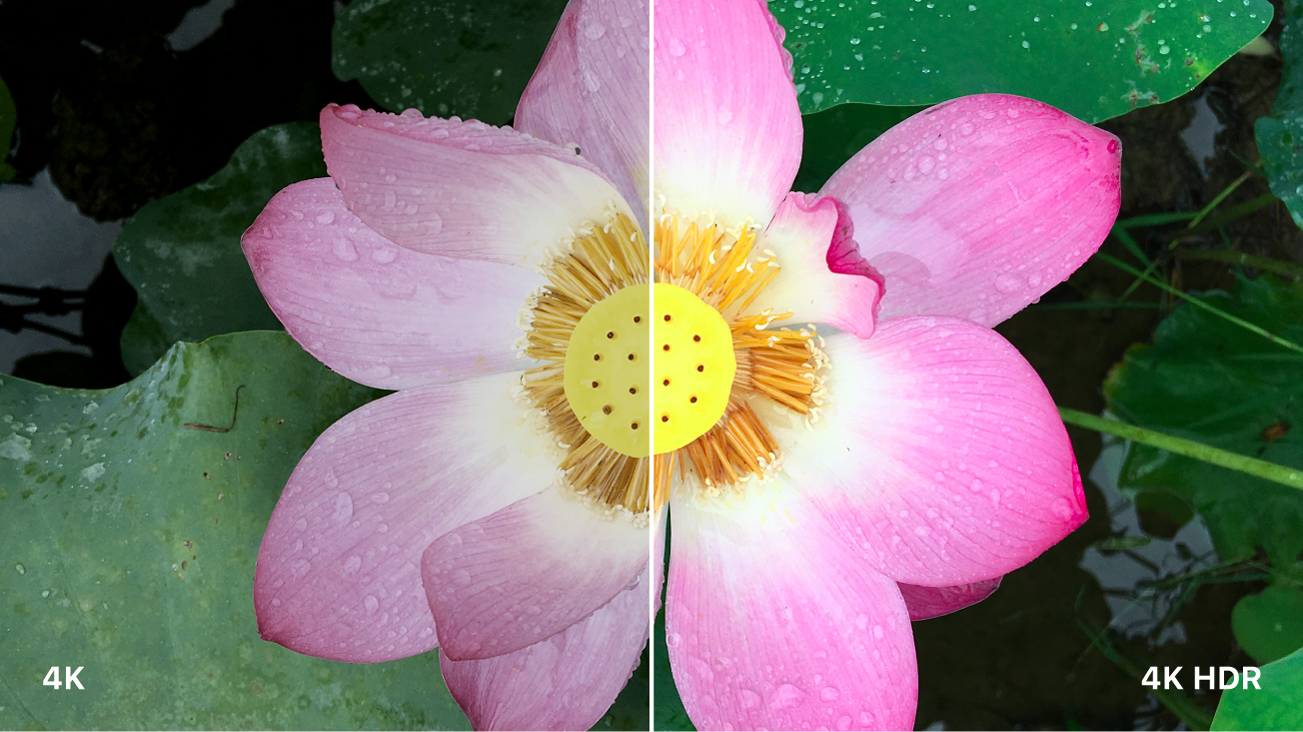Final Cut Pro User Guide
- Welcome
- What’s new
-
- Intro to effects
-
- Intro to transitions
- How transitions are created
- Add transitions and fades
- Quickly add a transition with a keyboard shortcut
- Set the default duration for transitions
- Delete transitions
- Adjust transitions in the timeline
- Adjust transitions in the inspector and viewer
- Merge jump cuts with the Flow transition
- Adjust transitions with multiple images
- Modify transitions in Motion
-
- Add storylines
- Use the precision editor
- Conform frame sizes and rates
- Use XML to transfer projects
- Glossary
- Copyright

Intro to wide color gamut and HDR in Final Cut Pro for Mac
No image device is capable of capturing and displaying the full spectrum of colors visible to the human eye. Consequently, image devices record, edit, display, or output a subset of those colors. This range of reproducible color is known as the device’s color space or color gamut. Because Final Cut Pro projects often involve media captured or created from different sources, and because color gamuts vary from device to device, Final Cut Pro employs a color-management system to reconcile those color differences. This ensures that an image looks the same on any output device, regardless of what color space it’s encoded in or how it was originally created.
Standard-gamut versus wide-gamut color
Traditional computer displays and HDTVs support a limited color space that’s based on a decades-old industry standard called Rec. 709. Rec. 709 devices (and the video content created for display on them) have standard-gamut color, the constrained color palette you see whenever you view a broadcast HDTV show, DVD, or Blu-ray disc.
A more recent generation of displays—including 4K televisions and computer displays, Apple TV 4K, and newer Mac, iOS, and iPadOS devices—can render a much wider palette of colors. These wide-gamut color devices display more vivid and lifelike hues (in addition to all the hues that standard-gamut devices can display). Accordingly, the video industry has adopted a wide-gamut color standard called Rec. 2020. Although most currently available wide-gamut devices support only a subset of the colors contained in the full Rec. 2020 specification, future imaging devices should be able to render more and more of those hues.
High dynamic range (HDR)
Additionally, some newer imaging devices can display extra levels of brightness in each color component (red, green, and blue) in a way that more closely reproduces how the human eye perceives contrast. These high-dynamic-range (HDR) displays typically process video at 10 bits per color component rather than 8 bits. The additional color data lets HDR displays render more discrete steps from the minimum to maximum brightness value in each color, creating more realistic color transitions and revealing more detail in both shadows and highlights.

Working with wide-gamut color and HDR in Final Cut Pro
Using profiles, or tags (assigned by the device upon creation) that describe the color space of the media, Final Cut Pro identifies the media’s colors. If the media was not profiled by the device (or was profiled incorrectly), you can manually override the assigned color space in your Final Cut Pro project. The computer display profile then tells Final Cut Pro how to translate the colors to the display’s color space. When you export from Final Cut Pro, the color-matching process algorithmically maps those colors to the output space of the project.
You can choose between two library color-processing options in Final Cut Pro:
Standard: Sets the working color space to linear RGB with Rec. 709 color primaries, the color space that previous versions of Final Cut Pro have used. Rec. 709 is the current standard for HDTV projects, including HD cable, Blu-ray discs, and most streaming video today.
Wide Gamut HDR: Sets the working color space to linear RGB with Rec. 2020 color primaries, a color space with a wider range of colors than Rec. 709. Rec. 2020 is useful for 4K and 8K UHDTV and HDR projects. In a Wide Gamut HDR library, the built-in camera LUT settings preserve the full dynamic range of log source media when converting to the working space.
Note: To view the wider range of colors in Rec. 2020, it’s recommended that you use a wide-gamut HDR external monitor and video interface. See Play media on an external display in Final Cut Pro for Mac. For tips on color correcting wide-gamut HDR projects with Mac displays, see Wide-gamut HDR tips in Final Cut Pro for Mac.
Nearly all devices and formats support capture in the Rec. 709 color space. Some devices and formats can also capture in the DCI-P3 and Rec. 2020 color spaces, which include a much wider gamut of colors.
Generally, your working color space should match your output color space (the color space you’re required to deliver the project in). If you’re exporting to multiple output color spaces, your working color space should match the output color space with the largest gamut.
For more information, see HDR and Wide Color Gamut in Final Cut Pro.
Download this guide: Apple Books | PDF